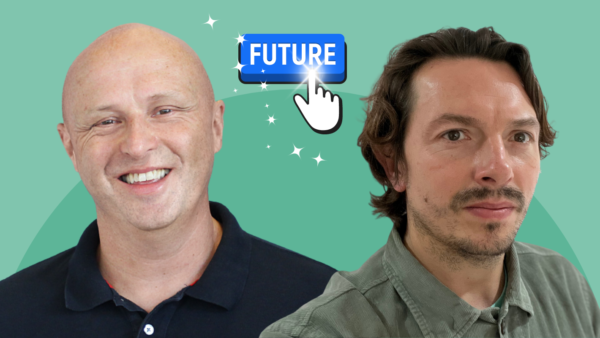Something’s changing in the world of recruitment: the candidate-led experience
There’s something changing in the world of recruitment and it’s been a long time coming. As an occupational psychologist, I have been trained how to design and deliver objective, science-led recruitment practices, involving the assessment of candidates across multiple competencies and using many different techniques: structured interviews, psychometrics, group exercises, role plays, in-basket or case study exercises. And over the past 25 years, I’ve done just that for dozens of clients, improving recruitment outcomes each time (like cost of hire, retention rates and speed of promotion).
All the way along the journey, I’d been sure to point out to hiring organisations I was working for that recruitment is a two way process. That candidates are also making assessments and judgements about whether or not they want to work for your organisation while you are busy assessing them. So it’s important to focus on your employer brand, on being open and honest about what it’s like to work in your organisation, if possible giving some sense of that through your recruitment process, from the way you handle candidates through to the content of your assessments.
What’s changed in the past 25 years of recruitment? Quite a lot, actually
During those 25 years though, there have been some seismic shifts in recruitment and talent acquisition. There have always been the more transitory market changes from predominantly recruiter-led, where it’s very hard for candidates to even get to interview, let alone to get a job, to candidate-led, where everyone seems to be vying for a small pool of candidates and McKinsey’s ‘war for talent’ mantra was born.
But we’ve also seen major changes in recruitment such as greater consciousness around diversity, the growth of technology (including AI), shorter tenure cycles due to job-hopping. Alongside this, we’ve seen changes in expectations from candidates, pre- and particularly post-pandemic, such as the rise of flexible working, the attraction of values-based, mission-driven organisations, and increasingly the need for a more candidate-led approach in the way that recruitment processes are run.
What is the candidate-led experience and how does strengths fit in?
It’s this candidate-led approach that I want to focus on now. For me, this is no longer a ‘desirable’ for your recruitment process, it’s essential. Because it’s expected now that organisations will enable open conversations about how candidates can be their best and bring their best to their roles. And that means a human-centric approach needs to be taken. Where candidates feel seen, understood and where organisations can explain how they can provide what the candidate needs and wants in order to flourish at work.
So recruitment today is no longer a ‘two way’ process. It’s more ‘candidate way’ than ever, irrespective of the ebbs and flows of the recruitment market. Recruitment today needs to allow a candidate-centric, candidate-led approach in order to win the war for talent and to keep people engaged and retained for as long as it makes sense for both parties, bringing the relationship to an end when the time comes, ideally with no regrets or hard feelings.
What about Strengthscope, where does it fit in?
So how does this candidate-led approach work alongside strengths and Strengthscope? Well at Strengthscope, what we recommend is that hiring organisations encourage candidates to complete Strengthscope, receive a copy of their report and then prepare to come to interview ready to talk about their strengths, and their risk areas, in a real, authentic, human way. So that both the candidate and the hiring manager can make a really well informed decision on the candidate’s fit in role, in team and in the culture of the organisation.
On a personal note here, I find this approach so very….right. It becomes the organisation’s obligation to be honest about what’s on offer, the hiring manager’s role to create a sufficiently safe environment for candidates to be able to be honest about who they are and what they will bring to a role, including owning and talking about their risks openly. And the candidate needs to be able to describe their unique qualities, what motivates and drives them, what they love about work, what they need in a working environment, role and team in order to be at their very best, as well as talking openly about the risks of them taking a role. And in that context, how can the outcome be anything other than a positive one for all parties. Noone should be under any illusions about what’s required, expected, on offer, and what’s not. From either side.
Is the candidate-led recruitment approach standard now? How did I miss it?
Now candidate-led recruitment isn’t the norm…yet. But it is gaining currency and momentum and my view is that this momentum will continue to build as the market moves from Gen Z to Gen Alpha, who are all the more expectant that they will get their needs met at work. And that they will be understood, recognised and utilised for the unique attributes that they bring. And if they’re not, they’ll just say no or will move on quickly, because no one really looks twice at a 3-6 month tenure on a candidate’s CV anymore.
What case study evidence can you offer that the strengths approach works in recruitment?
Let me tell you a little more about one of our clients who introduced this approach, who have now rolled it out globally and the benefits they’ve seen. The client is the technology company Siemens. Siemens have always been keen to trial new and innovative work approaches, including in recruitment. Around 10 years ago, they were one of the first organisations to pilot gamification for some of their entry level roles and that went very well at the time.
In the case of the strengths approach, Siemens’ Talent Acquisition team were keen to introduce the strengths approach to improve the company’s employer brand, as well as to enrich the candidate experience and improve decision-making quality on both sides. In short to enable a more authentic, real conversation between candidates and hiring managers where there was greater understanding of how the fit would work in practice.
So, during a pilot across four countries and in four languages, candidates used StrengthscopeInterview, a new report with information geared towards the recruitment context. The process was designed to be candidate-driven, so it would be optional for candidates to use. Candidates were encouraged to bring the insights from their reports into selection interviews, but again this was their choice. The report was theirs to keep, irrespective of the outcome, as a ‘gift’ from the company to help candidates in their future careers. In this way, Siemens TA were able to evolve their recruitment process to improve employer brand, candidate experience and the quality of selection interviews and decisions.
The outcomes were pretty unequivocal and actually really reassuring for any organisation considering going down this road:
- 99% of candidates and hiring managers felt the Strengthscope® offering had a positive impact
- 96% of candidates and 90% of hiring managers reported benefits in their decision making as a result
- 90% of hiring managers and 98% of candidates recommended that Strengthscope® should become a permanent part of the recruitment process at Siemens.
And so following on from the success of the initial pilot, Strengthscope® was rolled out across a total of 27 countries in 6 languages, in all job families. A link to the case study here.
There’s never a better time to start gearing your recruitment approach more towards the candidate
Hopefully I’ve started to make the case for candidate-led recruitment and for using strengths in the recruitment process in a way which empowers candidates to show up more as themselves, at their best, at the same time being more honest and open about any risk areas they may have.
If you’re interested to know more about this solution, I’d love for you to get in touch with the team at Strengthscope. Just go over to the Strengthscope website and complete a contact form and someone will be with you really soon. Or email us at help@strengthscope.com. We’d love to help. Till next time, stay strong.










